EXECUTIVE SUMMARY
Leadership in innovation is essential to U.S. prosperity and security. In a global, knowledge-driven economy, technological innovation—the transformation of knowledge into products, processes, and services—is critical to competitiveness, long-term productivity growth, and the generation of wealth. Preeminence in technological innovation requires leadership in all aspects of engineering: engineering research to bridge scientific discovery and practical applications; engineering education to give engineers and technologists the skills to create and exploit knowledge and technological innovation; and the engineering profession and practice to translate knowledge into innovative, competitive products and services.
Historically, engineering research has yielded knowledge essential to translating scientific advances into technologies that affect everyday life. The products, systems, and services developed by engineers are essential to national security, public health, and the economic competitiveness of U.S. business and industry. Engineering research has resulted in the creation of technologies that have increased life expectancy, driven economic growth, and improved America’s standard of living. In the future, engineering research will generate technological innovations to address grand challenges in the areas of sustainable energy sources, affordable health care, sufficient water supplies, and homeland security.
Unfortunately, U.S. leadership in technological innovation seems certain to be seriously eroded unless current trends are reversed. The accelerating pace of discovery and application of new technologies, investments by other nations in research and development (R&D) and the education of a technical workforce, and an increasingly competitive global economy are challenging U.S. technological leadership and with it future U.S. prosperity and security. Although many current measures of technological leadership—percentage of gross domestic product invested in R&D, number of researchers, productivity level, volume of high-technology production and exports—still favor the United States, worrisome trends are already adversely affecting the U.S. capacity for innovation. These trends include: (1) a large and growing imbalance in federal research funding between the engineering and physical sciences on the one hand and biomedical and life sciences on the other; (2) increased emphasis on short-term applied R&D in industry and government-funded research at the expense of fundamental long-term research; (3) erosion of the engineering research infrastructure due to inadequate investment over many years;
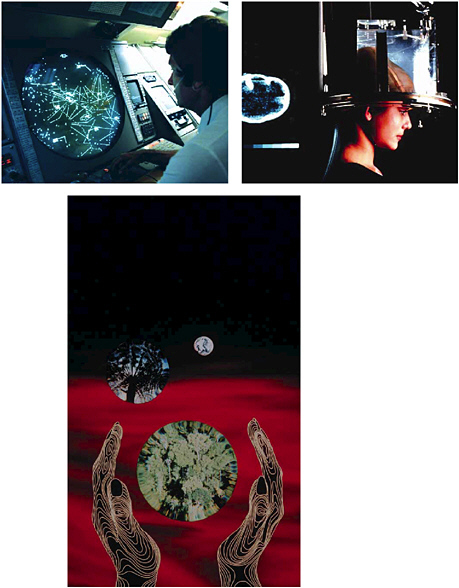
(4) declining interest of American students in engineering, science, and other technical fields; and (5) growing uncertainty about the ability of the United States to attract and retain gifted engineering and science students from abroad at a time when foreign nationals constitute a large and productive component of the U.S. R&D workforce.
Today more than ever the nation’s prosperity and security depend on its technical strengths. The United States will need robust capabilities in both fundamental and applied engineering research to address future economic, environmental, health, and security challenges. To capitalize on opportunities created by scientific discoveries, the nation must have engineers who can invent new products and services, create new industries and jobs, and generate new wealth. Applying technological advances to achieve global sustainability will require significant investment, creativity, and technical competence. Advances in nanotechnologies, biotechnologies, new materials, and information and communication technologies may lead to solutions to difficult environmental, health, and security challenges, but their development and application will require significant investments of money and effort in engineering research and the engineering workforce.
Current patterns in research funding do not bode well for future U.S. capabilities in these critical fields. Record levels of federal funds are being invested in R&D, but these levels reflect large increases in funding for biomedical and life sciences; investments in other fields of engineering and science have increased slowly and intermittently (if at all). Because of competitive pressures, U.S. industry has downsized its large, corporate R&D laboratories in physical sciences and engineering and reduced its already small share of funding for long-term, fundamental research. The committee believes that the decline in long-term industrial research is exacerbating the consequences of the current decline in federal R&D funding for long-term fundamental research in engineering and physical sciences.
These funding trends have had a predictably negative impact on academic research and student enrollments in engineering and physical sciences. In fact, foreign nationals now comprise 40 percent or more of graduate enrollments in physical sciences, mathematics and computer science, and engineering. In addition, nearly two-thirds of the graduate and undergraduate students in engineering who are U.S. citizens or permanent residents are white males. Increasing the overall number of American students pursuing degrees in physical sciences and engineering will be essential to meeting the future challenges facing the nation, but it will not be enough. We must also increase diversity by recruiting more women and underrepresented minorities in technical fields to ensure that we have the intellectual vitality to respond to profound and rapid change.
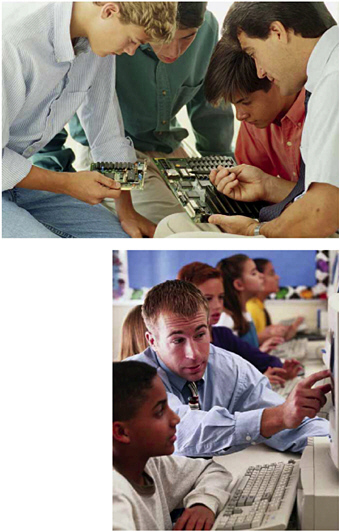
Current trends in research investment and workforce development are early warning signs that the United States could fall behind other nations, both in its capacity for technological innovation and in the size, quality, and capability of its technical workforce. Unless the United States maintains its resident capacity for technological innovation, as well as its ability to attract the best and brightest engineers and scientists from abroad, the economic benefits of technological advances may not accrue to Americans.
We must take action immediately to overcome existing imbalances in support for research to address emerging critical challenges. These actions must include both changes in direction by key stakeholders in the engineering research enterprise and bold new programs designed specifically to promote U.S. technological innovation. This conclusion echoes the findings of other recent assessments by the Council on Competitiveness (2001, 2004), President’s Council of Advisors on Science and Technology (2002, 2004a,b), National Science Board (2003), National Academies (COSEPUP, 2002; NAE, 2003, 2004, 2005; NRC, 2001), and other distinguished bodies (DOE, 2003; National Commission on Mathematics and Science Teaching for the 21st Century, 2000).
Considering the magnitude and complexity of the challenges ahead in energy, security, health care, the environment, and economic competitiveness, we simply do not have the option of continuing to conduct business as usual. We must change how we prioritize, fund, and conduct research; how we attract, educate, and train engineers and scientists; how we consider and implement policies and legal structures that affect intellectual property rights and related issues; and how we maximize contributions from institutions engaged in technological innovation and workforce development (e.g., universities, corporate R&D laboratories, federal agencies, and national laboratories).
Of course, major undertakings in anticipation of opportunities are always difficult, but the United States has a history of rising to the occasion in times of need. At least twice before in times of great challenge and opportunity, the federal government responded in creative ways that not only served the needs of society, but also reshaped institutions. Consider, for example, the Land Grant Acts in the nineteenth century, which not only modernized American agriculture and spearheaded America’s response to the industrial revolution, but also led to the creation of the great public universities that have transformed American society and sustained U.S. leadership in the production of new knowledge and the creation of human capital. Another example is the G.I. Bill and government-university research partnerships during the 1940s that were instrumental in establishing U.S. economic and military leadership.
With this history in mind, and with full recognition of the magnitude of the effort needed to prepare the United States for long-term technological leadership, the committee offers the following recommendations.
RECOMMENDATIONS
Federal Research and Development Budget
RECOMMENDATION 1. The committee strongly recommends that the federal R&D portfolio be rebalanced by increasing funding for research in engineering and physical science to levels sufficient to support the nation’s most urgent priorities, such as national defense, homeland security, health care, energy security, and economic competitiveness. Allocations of federal funds should be determined by a strategic analysis to identify areas of research in engineering and science that support these priorities. The analysis should explicitly include interdependencies among engineering and scientific disciplines to ensure that important advances are supported by advances in complementary fields to accelerate technology transfer and innovation.
Long-Term Research and Industry
RECOMMENDATION 2. Long-term basic engineering research should be reestablished as a priority for American industry. The federal government should design and implement tax incentives and other policies to stimulate industry investment in long-term engineering research (e.g., tax credits to support private-sector investment in university-industry collaborative research).
Engineering Research Infrastructure
RECOMMENDATION 3. Federal and state governments and industry should invest in upgrading and expanding laboratories, equipment, and information technologies and meeting other infrastructural needs of research universities and schools of engineering to ensure that the national capacity to conduct world-class engineering research is sufficient to address the technical challenges that lie ahead.
Quality of the Technical Workforce
RECOMMENDATION 4. Considering the importance of technological innovation to the nation, a major effort should be made to increase the participation of American students in engineering. To this end, the committee endorses the findings and recommendations of a 2005 National Academy of Engineering report, Educating the Engineer of 2020: Adapting Engineering Education to the New Century, which calls for system-wide efforts by professional societies, industry, federal agencies, and educators at the higher education and K–12 levels to align the engineering curriculum and engineering profession with the needs of a global,
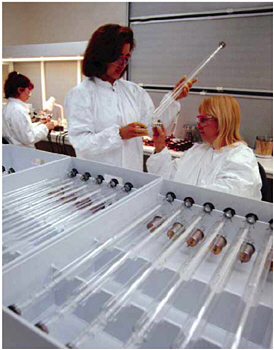

knowledge-driven economy with the goal of increasing student interest in engineering careers. Engineering education requires innovations, not only in the content of engineering curricula, but also in teaching methods that emphasize the creative aspects of engineering to excite and motivate students.
RECOMMENDATION 5. All participants and stakeholders in the engineering community (industry, government, institutions of higher education, professional societies, et al.) should place a high priority on encouraging women and underrepresented minorities to pursue careers in engineering. Increasing diversity will not only increase the size and quality of the engineering workforce, but will also introduce diverse ideas and experiences that can stimulate creative approaches to solving difficult challenges. Although this is likely to require a very significant increase in investment from both public and private sources, increasing diversity is clearly essential to sustaining the capacity and quality of the U.S. scientific and engineering workforce.
RECOMMENDATION 6. A major federal fellowship-traineeship program in strategic areas (e.g., energ;, info-, nano-, and biotechnology; knowledge services; etc.), similar to the program created by the National Defense Education Act, should be established to ensure that the supply of next-generation scientists and engineers is adequate.
RECOMMENDATION 7. Immigration policies and practices should be streamlined (without compromising homeland security) to restore the flow of talented students, engineers, and scientists from around the world into American universities and industry.
Industry and Research Universities
RECOMMENDATION 8. Links between industry and research universities should be expanded and strengthened. The committee recommends that the following actions, funded through a combination of tax incentives and federal grants, be taken:
-
Support new initiatives that encourage multidisciplinary research to address major challenges facing the nation and the world.
-
Streamline and standardize intellectual-property and technology-transfer policies in American universities to facilitate the transfer of new knowledge to industry.
-
Support industry engineers and scientists as visiting “professors of practice” in engineering and science faculties.
-
Provide incentives for corporate R&D laboratories to host advanced graduate and postdoctoral students (e.g., fellowships, internships, etc.).
Discovery-Innovation Institutes
RECOMMENDATION 9. Multidisciplinary discovery-innovation institutes should be established on the campuses of research universities to link fundamental scientific discoveries with technological innovations to create products, processes, and services to meet the
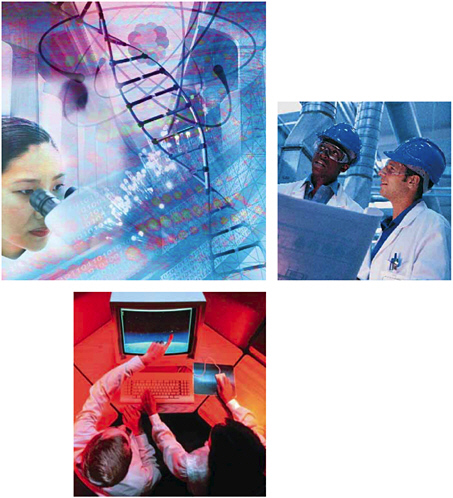
needs of society. Funding for the institutes should be provided by federal and state governments, industry, foundations, the venture capital and investing community, and universities.
With the participation of many scientific disciplines and professions, as well as various economic sectors (industry, government, states, and institutions of higher education), discovery-innovation institutes would be similar in character and scale to academic medical centers and agricultural experiment stations that combine research, education, and professional practice and drive transformative change. As experience with academic medical centers and other large research initiatives has shown, discovery-innovation institutes would stimulate significant regional economic activity, such as the location nearby of clusters of start-up firms, private research organizations, suppliers, and other complementary groups and businesses.
On the federal level, the discovery-innovation institutes should be funded jointly by agencies with responsibilities for basic research and missions that address major national priorities (e.g., National Science Foundation [NSF], U.S. Department of Energy, National Aeronautics and Space Administration, U.S. Department of Defense, U.S. Department of Homeland Security, U.S. Department of Transportation, U.S. Department of Commerce, Environmental Protection Agency, and U.S. Department of Health and Human Services).
States would be required to contribute to the institutes (perhaps by providing capital facilities). Industry would provide challenging research problems, systems knowledge, and real-life market knowledge, as well as staff who would work with university faculty and students in the institutes. Industry would also fund student internships and provide direct financial support for facilities and equipment (or share its facilities and equipment). Universities would commit to providing a policy framework (e.g., transparent and efficient intellectual property policies, flexible faculty appointments, responsible financial management, etc.), educational opportunities (e.g., integrated curricula, multifaceted student interaction), knowledge and technology transfer (e.g., publications, industrial outreach), and additional investments (e.g., in physical facilities and cyberinfrastructure). Finally, the venture capital and investing community would contribute expertise in licensing, spin-off companies, and other avenues of commercialization.
Some of the existing NSF-sponsored engineering research centers (ERCs) may serve as a starting point for the development of discovery-innovation institutes. Yet the multidisciplinary scope and scale of the research, education, innovation, and technology-transfer activities of fully developed discovery-innovation institutes will certainly dwarf the important, but more limited, activities of ERCs.
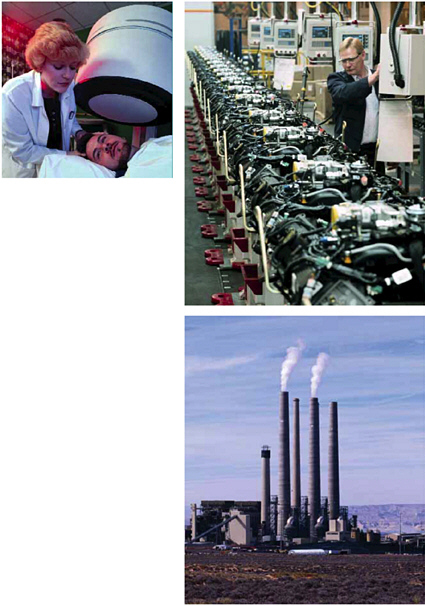
To ensure that the discovery-innovation institutes lead to transformative change, they should be funded at a level commensurate with past federal initiatives and current investments in other areas of research, such as biomedicine and manned spaceflight. Federal funding would ultimately increase to several billion dollars per year distributed throughout the engineering research and education enterprise; states, industry, foundations, and universities would invest comparable amounts.
The committee recognizes that current federal and state budgets are severely constrained and are likely to remain so for the foreseeable future. Nevertheless, as the public comes to understand the importance of leadership in technological innovation to the nation’s economic prosperity and security, the committee believes this initiative could be given a high priority in the federal budget process.
To transform the technological innovation capacity of the United States, the discovery-innovation institutes should be implemented on a national scale and backed by a strong commitment to excellence by all participants. Most of all, they would be engines of innovation that would transform institutions, policies, and cultures and enable our nation to solve critical problems and maintain its leadership in the global, knowledge-driven society of the twenty-first century.
CONCLUSION
Exciting opportunities in engineering lie ahead. Some involve rapidly emerging fields, such as information systems, bioengineering, and nanotechnology. Others involve critical national needs, such as sustainable energy sources and homeland security. Still others involve the restructuring of engineering education to ensure that engineering graduates have the skills, understanding, and imagination to design and manage complex systems. To take advantage of these opportunities, however, investment in engineering research and education must be a much higher priority.
The country is at a crossroads. We can either continue on our current course—living on incremental improvements to past technical developments and gradually conceding technological leadership to trading partners abroad—or we can take control of our destiny and conduct the necessary research, capture the intellectual property, commercialize and manufacture the products, and create the high-skill, high-value jobs that define a prosperous nation. The United States has the proven ability and resources to maintain the global lead in innovation. Engineers and scientists can meet the technological challenges of the twenty-first century, just as they met the challenges of World War II by creating the tools for military victory and just as they mounted an effective response to the challenge of Sputnik and Soviet advances in space.
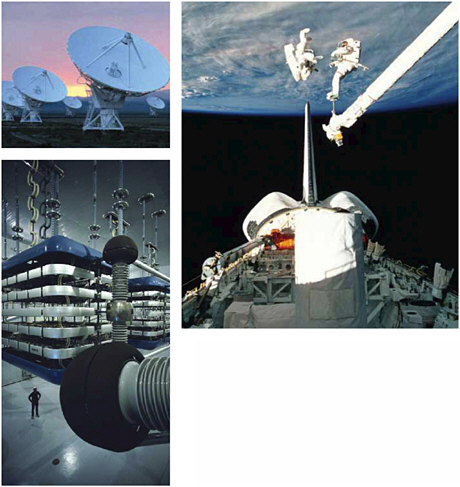
REFERENCES
COSEPUP (Committee on Science, Engineering and Public Policy). 2002. Observations on the President’s Fiscal Year 2003 Federal Science and Technology Budget. Washington, D.C.: National Academies Press.
Council on Competitiveness. 2001. Imperatives for Innovation: The Second National Innovation Summit 2001. Washington, D.C.: Council on Competitiveness. Executive summary available online at: http://www.compete.org/pdf/summit_exsumm.pdf.
Council on Competitiveness. 2004. Innovate America. Washington, D.C.: Council on Competitiveness. Available online at: http://www.compete.org/pdf/NII_Final_Report.pdf.
DOE (U.S. Department of Energy). 2003. Critical Choices: Science, Energy, and Security. Final Report of the Secretary of Energy Advisory Board Task Force on the Future of Science Programs at the Department of Energy. Washington, D.C.: U.S. Department of Energy.
NAE (National Academy of Engineering). 2003. The Impact of Academic Research on Industrial Performance. Washington, D.C.: National Academies Press.
NAE. 2004. The Engineer of 2020: Visions of Engineering in the New Century. Washington, D.C.: National Academies Press.
NAE. 2005. Educating the Engineer of 2020: Adapting Engineering Education to the New Century. Washington, D.C.: National Academies Press.
NCMST (National Commission on Mathematics and Science Teaching for the 21st Century). 2000. Before It’s Too Late: A Report to the Nation. Jessup, Md.: Education Publications Center.
NRC (National Research Council). 2001. Trends in Federal Support of Research and Graduate Education. Washington, D.C.: National Academy Press.
NSB (National Science Board). 2003. The Science and Engineering Workforce: Realizing America’s Potential. NSB 0369. Available online at: http://www.nsf.gov/nsb/documents/2003/nsb0369/nsb0369.pdf.
PCAST (President’s Committee of Advisors on Science and Technology). 2002. Assessing the U.S. R&D Investment. Available online at: http://www.ostp.gov/PCAST/FINALR&DREPORTWITHLETTERS.pdf.
PCAST. 2004a. Sustaining the Nation’s Innovation Ecosystem: Maintaining the Strength of Our Science and Engineering Capabilities. Available online at: http://www.ostp.gov/PCAST/FINALPCASTSECAPABILITIESPACKAGE.pdf.
PCAST. 2004b. Sustaining the Nation’s Innovation Ecosystem: Information Technology, Manufacturing and Competitiveness. Available online at: http://ostp.gov/pcast/FINALPCASTIT-Manuf%20ReportPackage.pdf.








